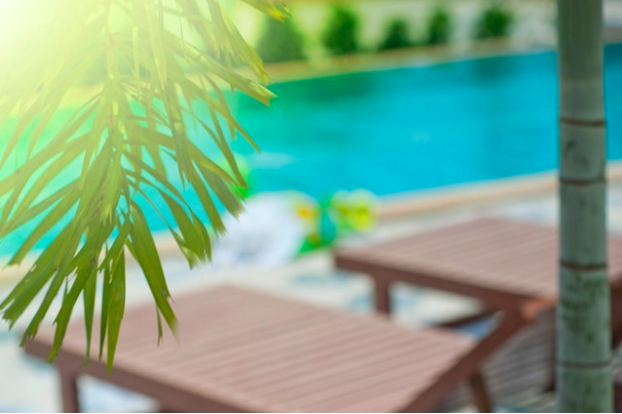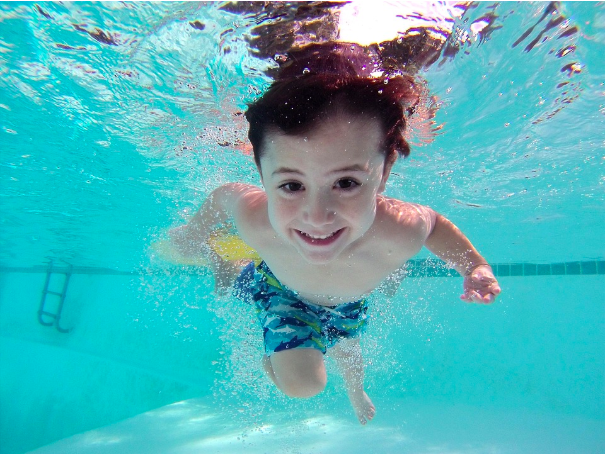Controlling Algae Blooms in Your Swimming Pool
Publication date : Thursday, August 22nd, 2019

Algae spores are brought into swimming pools from rain, wind or contaminated bathing suits. They can bloom almost instantly if the conditions are right. No matter how clean a swimming pool is, algae are ever-present. They wait patiently for the opportunity to bloom, so it’s up to you to keep your pool in good working condition.
What Causes Algae Problems in Swimming Pools
It’s no secret why algae thrive in swimming pools. Algae need food to survive, and a swimming pool provides this in the form of debris and contaminants. Fortunately, algae can be controlled with the right chlorine and pH levels and properly working equipment. But, if circulation, filtration or sanitation are lacking, it allows the algae to grow and take over the pool.
Green algae are most common, but there are others as well, such as yellow algae and black algae. Algae are classified by color because there are tens of thousands of varieties. It’s important to diagnose the type of algae you have as the cleaning methods might be different.
What Problems Can Algae Lead To?
When algae get an opportunity to bloom, they cloud and color the water. People don’t want to swim because it’s difficult to see and may not be safe. Even though algae aren’t dangerous on their own, they can harbor bacteria and pathogens like E.coli. Algae can also clog up the filtration system, making it less effective.
Another complication of algae is that they can stain pool surfaces. Algae tend to hide in dark crevices, including underneath pool liners. As the chlorine in your pool works hard to get rid of the algae, there’s not enough of the chemical to remove other contaminants. pH levels then rise as a result of the carbon dioxide.
How to Prevent Algae Blooms in Your Pool
Remember, algae are already in your swimming pool, so you’ll want to maintain proper chemical balance, filtration and circulation. Here are a few tips to prevent algae from taking over your pool.
- Make sure your circulation system is running
- Keep chlorine levels in an ideal range
- Shock your pool once a week
- Brush your pool (walls, floors, steps) each week
- Vacuum your pool to remove contaminants
- Use an algaecide regularly
Algae spores are inevitable, but you don’t have to let them take over your pool. By following the tips above, you can keep on top of algae spores and ensure a clean, safe swimming environment for you and your family!
How to Fix Green Algae Blooms in Your Pool
Publication date : Tuesday, November 27th, 2018

Picture this: it’s time to wind your pool down for the year, and that means running basic maintenance tasks. You walk into the backyard to get started, peel back the cover, and discover that the water beneath is thick, slimy and green. What gives?
That thick green cover you’re seeing isn’t an alien; it’s algae, an opportunistic eukaryotic organism that loves water and sunlight. It grows anywhere moisture levels and temperature levels are right – puddles, ponds, rivers, and yes, your pool, too. If you aren’t running regular maintenance, you could find yourself at war with it.
About Algae
Algae blooms can happen virtually any time. Sometimes, it’s a result of a lack of maintenance; at other times, it seems to happen for no identifiable reason. It is, however, more common during periods when pools remain filled, yet unused, untreated, and improperly maintained (such as over the winter or fall months).
Treating algae in pools is a multi-step process. Whether you’re about to close your pool for the year or opening it up for the first time in the spring, prompt treatment is a must. Left to sit, green algae can cause damage to the liner and pool filters, not to mention spurring on the development of dangerous molds. Use this step-by-step guide as a rough outline to fixing the problem.
Step 1: Clean Large Debris
Using a manual pool vacuum, scoop, or net, pull up as much debris and algae as you can. Alternatively, just drain the whole thing out and rinse it down with a hose. When the water is full and free from big chunks or dirt, brush the walls down well using a stiff broom or pool wall cleaning device. Once it appears relatively clean, refill it or move to the next step.
Step 2: Test and Balance
Test and balance the water for PH level and all other standards outlined in your pool owner’s manual. Correct these values first, before you move on to any of the other steps. This process is different for every pool, so it’s best to check your manual.
Step 3: Shock with Chlorine
For this step, you’ll need to get your hands on some calcium hypochlorite or another chlorinating product. Again, here, the directions depend on the product for your specific pool and pool size. Follow the instructions on the package closely, but double the recommended dose by two to treat green algae. If the algae is extremely dark, brown, or yellow, triple the dose instead.
Step 4: Look for the Blue and Filter it Through
Watch closely for blue pool water – this is a sign the treatment is working. Start those filters and continue to filter the algae out until the water is essentially clear. Depending on how long it’s been since the last maintenance call, you may need to change out the filters or de-clog them during this process.
Step 5: Test Again (and Maintain)
Once the water has been clear with no sign of algae for a minimum of eight hours, test the water again. Rebalance if needed and begin maintaining with chemicals and regular maintenance tasks. The more often you run upkeep, the less likely algae is to happen.
This is a simple overview of the algae treatment process, but it may not be the right choice for every instance or every pool. For more information, call Paradise Pools.


 CALL US TODAY!
CALL US TODAY!




